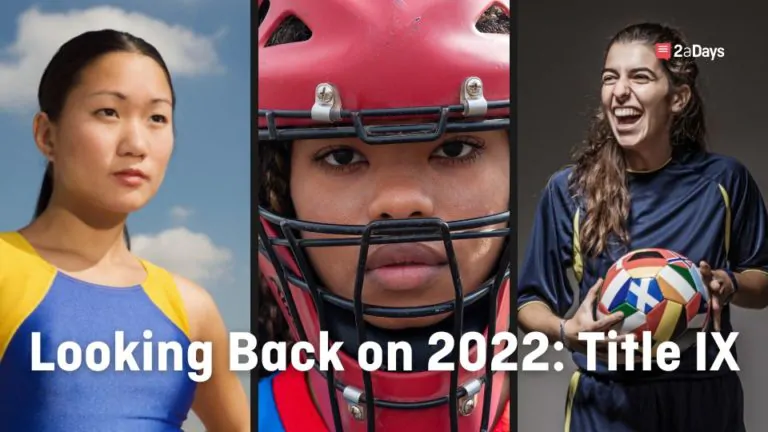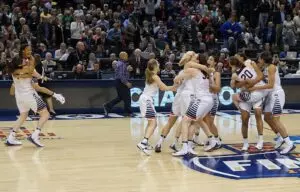Since its implementation, Title IX of the Education Amendments Act of 1972 has allowed females to take massive steps towards equity in the classroom, in the workplace, and on the field. However, there is still a lot of room for improvement when it comes to gender equity in college sports.
To be Title IX compliant, universities must comply with one of these three participation prongs, per the NCAA:
- Provide participation opportunities for women and men that are substantially proportionate to their respective rates of enrollment of full-time undergraduate students
- Demonstrate a history and continuing practice of program expansion for the underrepresented sex
- Fully and effectively accommodate the interests and abilities of the underrepresented sex.
Most institutions choose the first of the three options. However, many athletic programs are actually out of Title IX compliance, and even the ones that are compliant typically do so via loopholes. One of the most common ways these athletic programs remain compliant is through adding a women's rowing team.
Related: Not All Sports Are Created Equal: The Truth behind Women's Rowing and How It Saves Football
Another very common loophole is to add a women's indoor track and field team while omitting a men's indoor track and field team. Doing so allows the female athletes who are already at the university competing on the track team to each count as another participant in the athletic program. For example, if an athlete participates in cross country, indoor track, and outdoor track, that single athlete would count as three participants towards the athletic department's total participants.
Because of this, many athletic departments add a women's indoor track and field team but do not add a men's indoor track and field team. This allows these athletic departments to have anywhere from 15 to 75 more female participants in their count without having to actually add more female athletes (or cut football). But, for a law intended to PROMOTE gender equity, doesn't it seem unfair to sponsor a sport for women, but not for men?
For example, Miami University in Oxford, Ohio had a total of 286 male athletes and 245 female athletes in 2020-21, according to its EADA report. However, once the athletes who participate in multiple sports are factored in, the EADA report shows that Miami had 311 male participants and 319 female participants. Without this being factored in, Miami would have had 41 less female athletes than male athletes (which is technically correct), but with the duplicates added in, Miami seems to have 8 more female athletes than male athletes. This is due to the fact that Miami sponsors a women's indoor track and field team but not a men's indoor track and field team.
Related school rating: Miami University
Miami is definitely not the only school that does this, as many institutions across the NCAA sponsor women's indoor teams but not men's indoor teams, largely due to this Title IX compliance.
When loopholes like this exist, is the true purpose of Title IX being respected? Do loopholes like these actually allow for gender equity and equality in college sports? Or do they hurt athletes more than helping them?
Have an idea for a story or a question you need answered? Want to set up an interview with us? Email us at [email protected]
* Originally published on February 22, 2022, by Macy McHale







